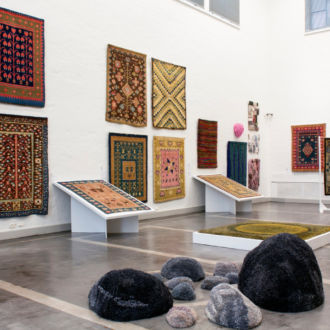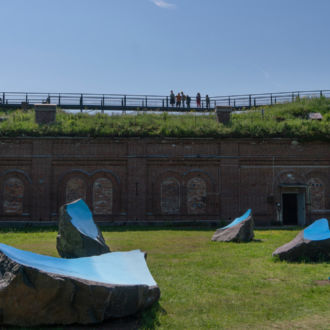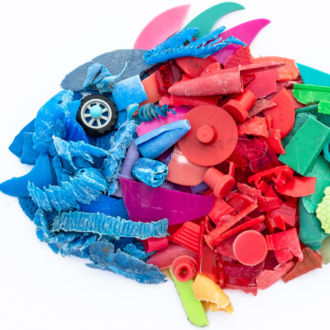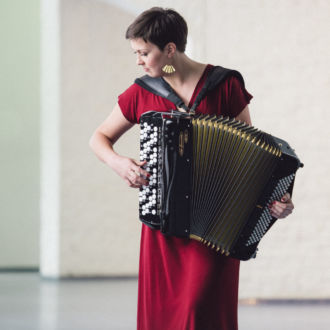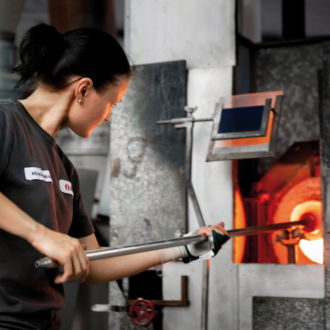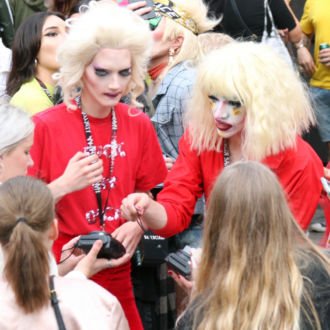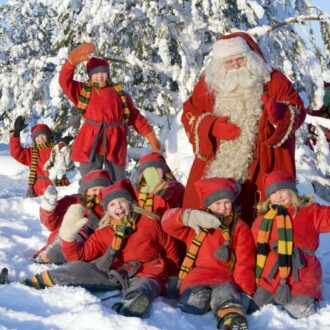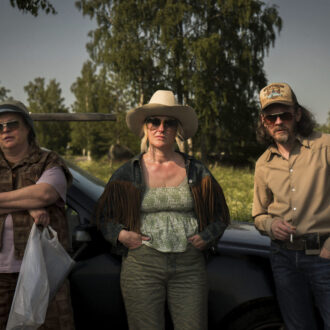On a damp, chilly Saturday in September, four friends gathered for the harvest at an allotment garden in Helsinki. Then came a surprise.
“We’d been working together in Antti and Hanne’s garden,” says Maarit Kytöharju. “Suddenly Markus Hohti appeared with his cello and played us a piece by Andy Akiho. The moment was perfect.”
Forging ahead
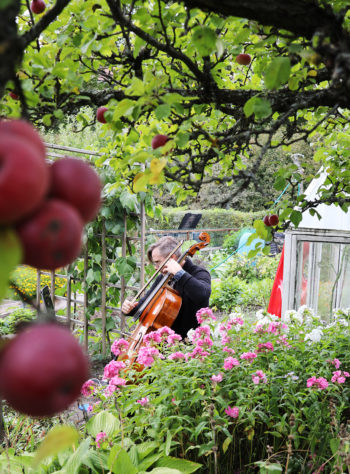
In an allotment garden, cellist Markus Hohti plays a pop-up concert as a Helsinki Festival Art Gift.Photo: Maarit Kytöharju
She had secretly arranged the visit through the Helsinki Festival’s Art Gifts, which brought intimate, free performances to city residents’ gardens and courtyards at the request of friends or family. The pop-up performances ranged from poetry readings to circus antics, and were a surprise to both donors and recipients.
“It was fabulous that we were given an opportunity to experience a live concert, our first in two years,” says Antti Selkokari.
Hohti is a member of the contemporary music group defunensemble, who were scheduled to play in the Helsinki Festival, Finland’s biggest annual cultural event. Nearly all of the two-week festival’s concerts had to be cancelled on short notice due to new restrictions after a brief wave of new Covid infections in early August (that number receded again in the subsequent weeks).
A resonant bike tour
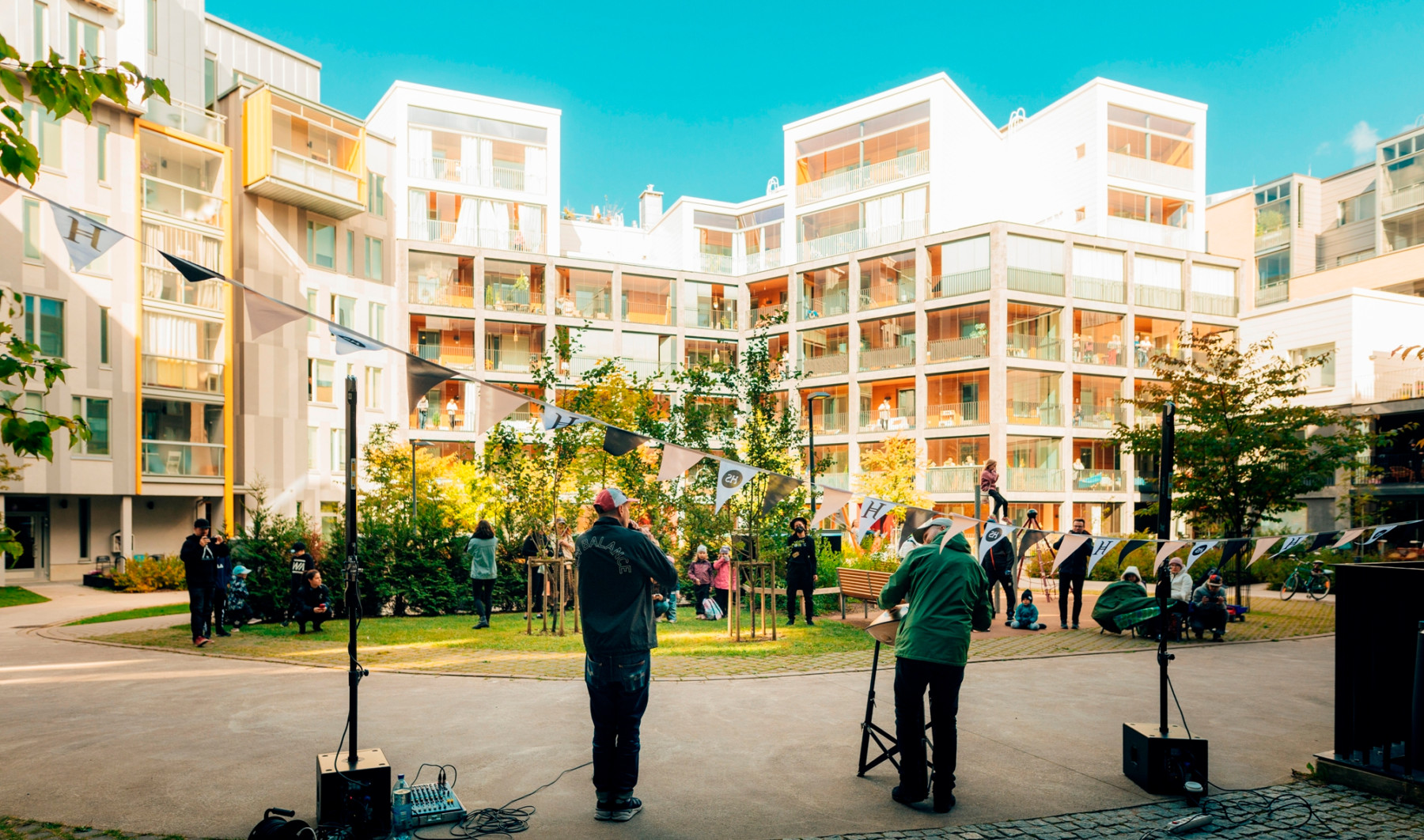
People are in the courtyard and on their balconies listening to Lauri Wuolio (right) play a Helsinki Festival Block Concert together with beatboxer Felix Zenger.Photo: Petri Anttila/Helsinki Festival
The multigenre festival went ahead with those offerings that could be arranged safely – including about 1,000 Art Gifts and 50 Block Concerts for limited groups of neighbours.
These featured topflight performers ranging from Roma singer Hilja Grönfors to jazz saxophonist Timo Lassy, Iraqi-Finnish duo Ali Saad & Sanna Salmenkallio, string quartet Meta4, kora master Cheikh Cissokho and bassist Lauri Porra, whose great-grandfather, composer Jean Sibelius, was the Helsinki Festival’s original namesake: it started 60 years ago as Sibelius Weeks.
Under the name Kumea Sound, Lauri Wuolio plays a round, melodic, metal instrument known as a cupola or handpan. He calls the Art Gifts “a really rewarding experience.”
Wuolio performed 15 of them, travelling more than 100 kilometres (60 miles) by bike with 15 kilos (30 pounds) of equipment. “It poured rain two out of the three days, so it was a good workout!” he says with a grin.
“After so long, it felt special to be able to play to someone who was actually there in the same space, reacting in real time. I chose the songs on the spot depending on the surroundings.”
Genius ideas

Ali Saad (left) and Sanna Salmenkallio perform in a Block Concert, part of the Helsinki Festival.Photo: Petri Anttila/Helsinki Festival
Wuolio also played several Block Concerts with beatboxer Felix Zenger and accordionist Niko Kumpuvaara.
“Those were very different, as a lot of kids came to watch,” says Wuolio. “It was beautiful to see people emerge from their homes after a long period without concerts, and suddenly be out on their balconies and courtyards, listening, laughing and dancing.”
Accordionist Viivi Maria Saarenkylä of the duo Vildá also performed both Art Gifts and Block Concerts.
“These were simply genius ideas for the strange times we’re experiencing as artists and cultural consumers,” she says. “It was a unique experience to surprise people and see how such a short moment brought joy and happiness for all of us present.”
Art experiences
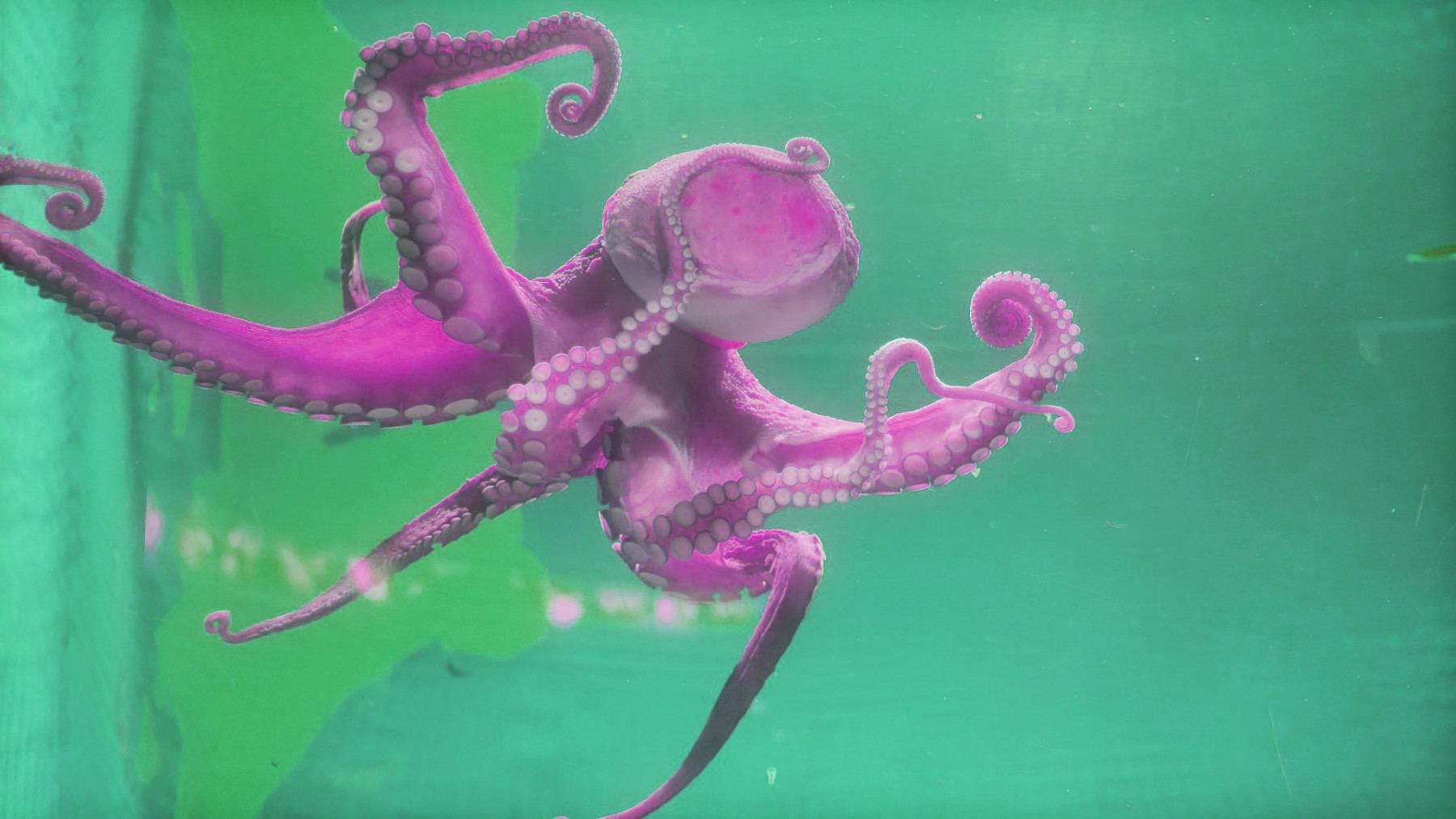
Kuwaiti artist Monira Al Qadiri’s video Divine Memory was on display at Kunsthalle Helsinki in the show Coming to Our Senses during the Helsinki Festival.Video still photo courtesy of Kunsthalle Helsinki
Other Helsinki Festival offerings that went ahead despite the corona restrictions were Coming to Our Senses, which brought inspiring videos, performance art and sculpture to the galleries of Kunsthalle Helsinki, and a mesmerising sound-and-vision installation by Brian Eno at Helsinki Music Centre.
“Though it was frustrating that our programme couldn’t proceed in full, we were able to bring art closer to Helsinkians with the Art Gifts and courtyard concerts all over the city,” says the festival’s artistic director, Marko Ahtisaari. “It’s essential that audiences can once again experience art together and that artists can do meaningful work.”
Where design is going
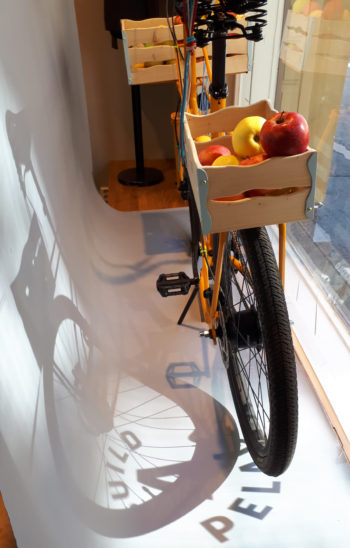
For Helsinki Design Week, Pelago Bicycles solicited new, creative bike designs in Build-A-Pelago and showed off the results in their flagship store.Photo: Wif Stenger
Facing similar challenges in the weeks just after the festival was another urban rite of autumn, Helsinki Design Week, which had to cancel its main venue and many exhibitions.
Those that went ahead included a display of imaginative custom-designed bikes at the Pelago Bicycles shop in the Design District, and a participatory urban art project in Old Church Park called Where are you going to?, where passers-by were invited to create arrows showing the direction they were heading in.
Seemingly ancient images
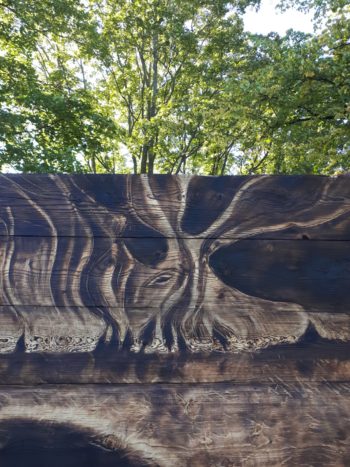
Green trees stretch upward behind the wooden artwork of Time of Miracles, which Antia Sanchez and Hannes Aleksi constructed for Helsinki Design Week.Photo: Wif Stenger
In another park, behind the National Museum, was Time of Miracles by the Finnish-Spanish duo Hannes Aleksi and Antia Sanchez, a large installation inspired by the Kalevala, Finland’s national epic. The wooden structure and its evocative aromas of pine tar invited the young at heart to clamber inside and marvel at seemingly ancient images of hunting and forest spirits.
“Naturally, the pandemic had a huge impact,” says Helsinki Design Week CEO Kari Korkman. “Some of the content could be turned into digital form through our Helsinki Design Weekly media platform. I’m sure the pandemic has accelerated progress towards online interaction, but it still doesn’t match the effectiveness of physical encounters. Let’s hope we’re back up close and personal next year.”
By Wif Stenger, September 2021
